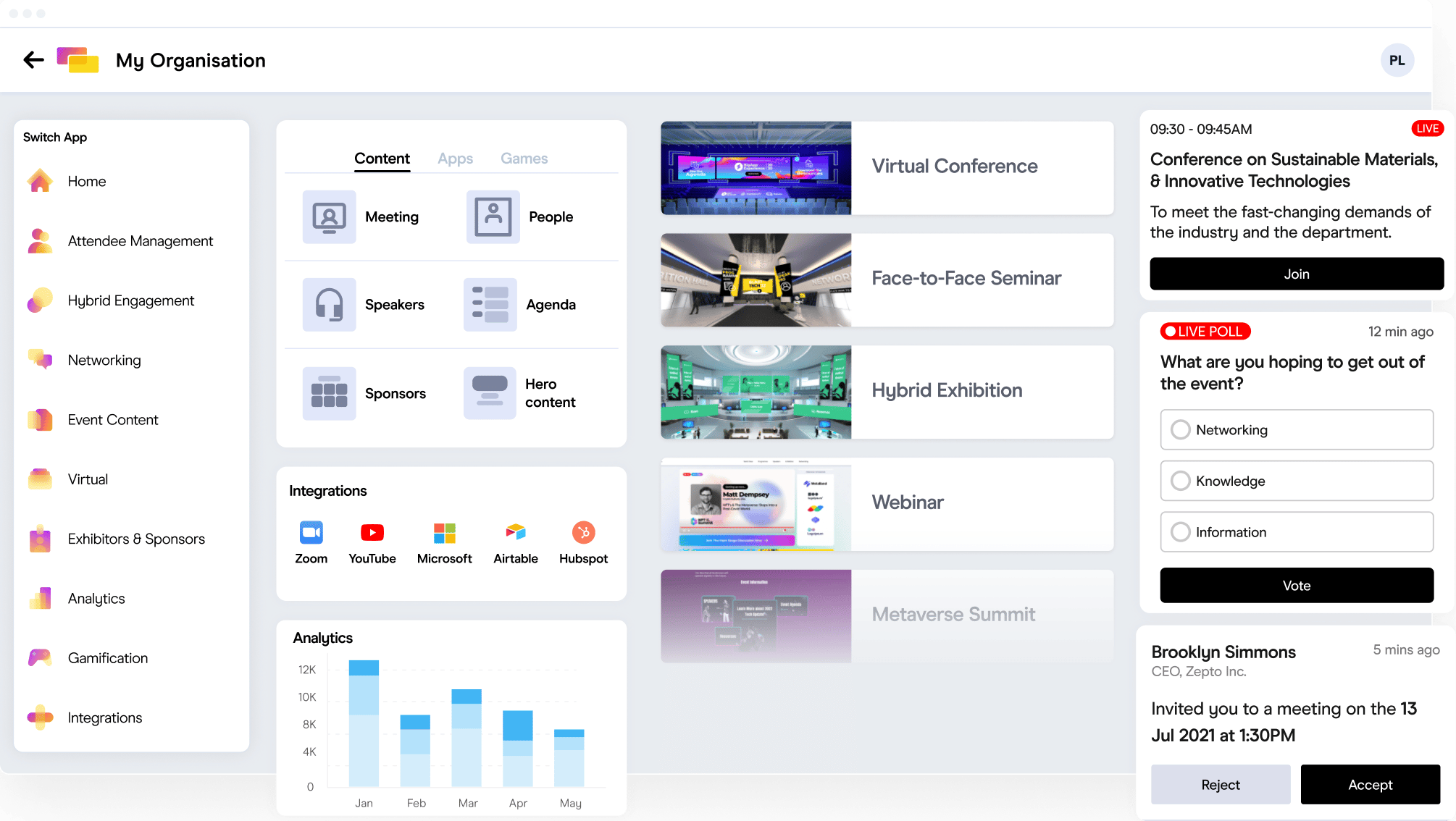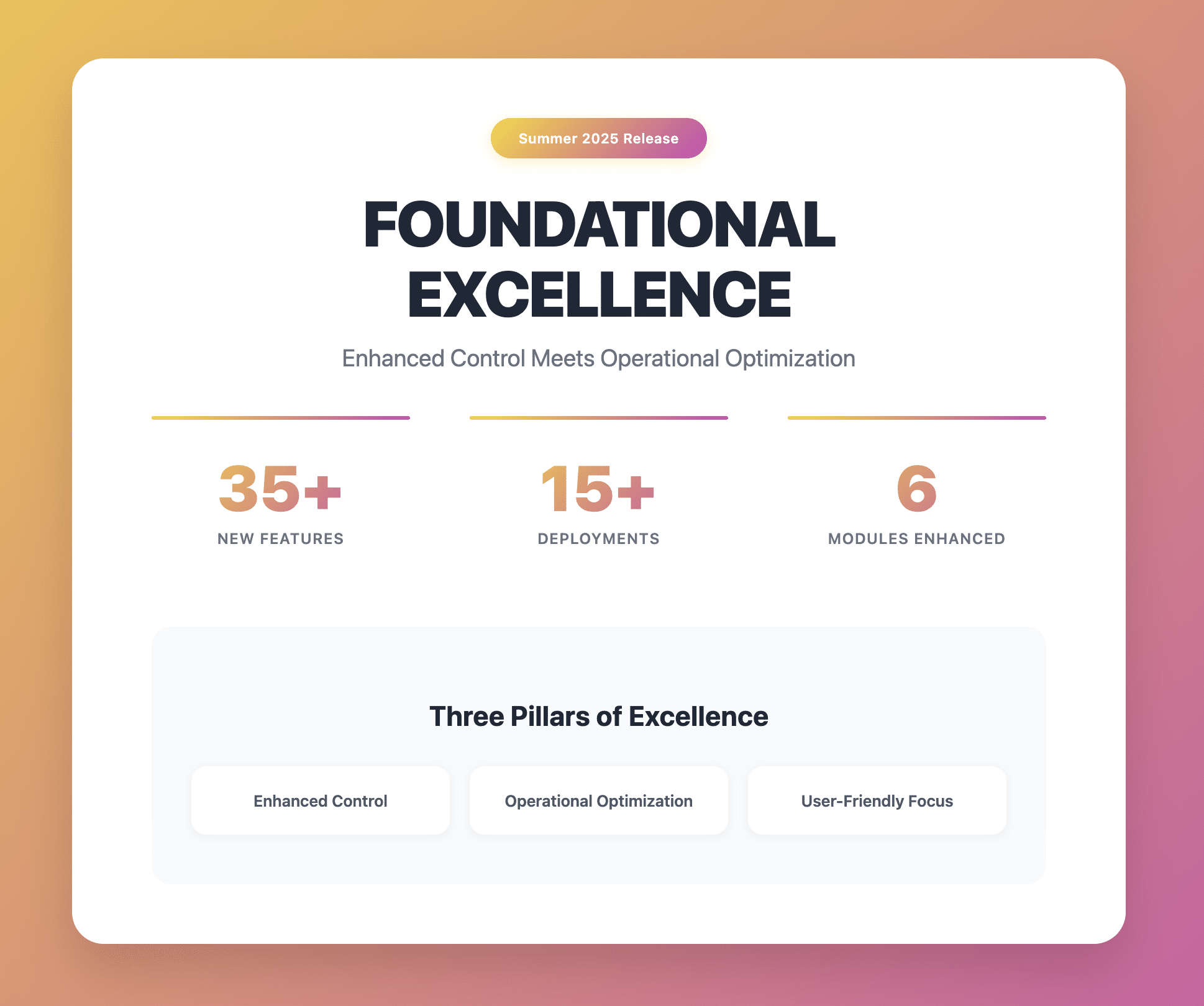Event planners face growing pressure to reduce their environmental impact. As we approach 2025, sustainable event management has become essential, not optional. Organizations worldwide expect events to meet strict environmental standards while delivering outstanding experiences.
The numbers tell a compelling story. The events industry produces substantial carbon emissions through travel, accommodation, catering, and waste. Yet many event organizers struggle to measure and reduce their environmental impact effectively.
Technology, particularly AI-powered solutions, offers practical ways to tackle these challenges. Smart tools now help event planners track resource usage, cut waste, and make data-based decisions about their sustainability efforts.
The Core Components of Sustainable Event Management
Creating environmentally responsible events requires attention to several key areas. Let’s look at how each component contributes to overall event sustainability.
Resource Efficiency and Waste Management
Smart resource management starts with careful planning. This means ordering the right amount of supplies, choosing reusable or recyclable materials, and setting up effective waste sorting systems. Modern event venues now offer recycling stations, water refill points, and digital alternatives to printed materials. Many venues have started tracking their waste reduction progress, showing significant improvements when proper systems are in place.
Carbon Footprint Measurement
Understanding your event’s carbon impact means looking at the full picture. Transportation emissions often make up the largest portion, coming from attendees and suppliers traveling to the venue. Energy usage at the venue itself adds to this total, along with the impact of food services, waste handling, and participant accommodation. Getting accurate measurements of these factors helps identify where you can make the biggest improvements.
Community Impact and Event Legacy
Sustainable events create positive lasting effects on their host communities. Working with local businesses and suppliers strengthens the local economy. Many events now include educational components that share sustainability knowledge with participants and local residents. Some events leave behind improved infrastructure or new community partnerships that benefit the area long after the event ends.
Sustainable Supplier Partnerships
Working with environmentally conscious suppliers strengthens your sustainability efforts. The best partners use renewable energy sources and minimize packaging in their operations. They often provide local sourcing options that reduce transportation emissions. These partnerships help create a network of businesses committed to reducing environmental impact across the entire event supply chain.
AI’s Role in Sustainable Events
AI technology transforms how we manage event sustainability through smart monitoring and decision-making tools.
Real-time Carbon Tracking
Modern AI systems monitor your event’s carbon footprint as it happens. These systems can instantly spot unusual energy usage patterns or waste production levels, allowing organizers to make quick adjustments. The technology also identifies opportunities for carbon offsets based on actual event data, making it easier to achieve sustainability goals.
Smart Resource Management
AI helps prevent waste by predicting resource needs more accurately. By analyzing data from past events and current registrations, the technology can forecast exactly how much food, materials, and supplies an event will need. This precision helps avoid over-ordering while ensuring all attendee needs are met.
Personalized Sustainability Solutions
AI creates custom sustainability plans based on your specific event needs. Each event has unique challenges based on its size, location, and type. AI technology considers these factors along with available resources and budget constraints to suggest practical steps for reducing environmental impact while maintaining event quality.
Data-Driven Improvements
AI systems learn from each event, building better sustainability recommendations over time. The technology tracks which reduction strategies work best, identifies common problem areas, and suggests cost-effective solutions. This continuous learning process means each event can be more sustainable than the last, creating a cycle of ongoing improvement in environmental performance.
Practical Steps for Reducing Event Carbon Footprint
Turning sustainability goals into reality requires specific actions across all event areas. Here’s how to make meaningful reductions in your event’s environmental impact.
Smart Venue Selection
Choosing the right venue sets the foundation for a sustainable event. Look for venues with built-in energy efficiency systems, natural lighting, and good public transportation access. Modern sustainable venues often feature:
- Solar power or renewable energy sources
- Smart HVAC systems
- Water conservation features
- Waste management facilities
- Electric vehicle charging stations
Transportation Planning
Transportation typically creates the largest share of an event’s carbon footprint. Reducing these emissions starts with good planning. Offer shuttle services from major transportation hubs to the venue. Partner with ride-sharing services for local travel. Consider virtual attendance options for distant participants to cut travel emissions entirely.
Energy Management
Smart energy management makes a big difference in your event’s environmental impact. Work with your venue to set up energy monitoring systems. Plan the event schedule to maximize natural light usage. Use LED lighting and energy-efficient equipment. Set up equipment power-down schedules during breaks and off-hours.
Waste Reduction Systems
Start with clear waste reduction goals. Train staff and vendors on proper waste sorting. Set up clearly marked recycling and composting stations. Work with caterers to plan portion sizes that minimize food waste. Most importantly, measure and track your waste to identify areas for improvement.
Measuring Event Sustainability Success
Without proper measurement, you can’t manage your sustainability efforts effectively. Here’s how to track and prove your event’s environmental impact.
Setting the Right Metrics
Focus on measurements that matter for your specific event type. Track basic metrics like energy usage, water consumption, and waste production. But also measure broader impacts like:
- Carbon emissions per attendee
- Percentage of waste diverted from landfills
- Local supplier participation rates
- Transportation emissions avoided
- Resource recovery rates
Tracking Progress
Use digital tools to gather data throughout your event. Modern tracking systems can monitor multiple sustainability indicators in real time. This immediate feedback lets you make adjustments during the event instead of waiting for post-event reports.
Long-term Impact Assessment
Sustainability success goes beyond the event dates. Track how your event affects the local community over time. Document improvements in local recycling systems or new sustainability programs sparked by your event. Follow up with participants to measure changes in their environmental awareness and practices.
Reporting and Communication
Share your sustainability results with stakeholders. Use clear, specific numbers that show real impact. For example, don’t just say you reduced waste – show exactly how many tons of material were diverted from landfills. Compare results to previous events to demonstrate improvement. Be honest about areas that need work and share plans for future improvements.
Building a Sustainable Event Strategy
A successful sustainability strategy needs both short-term actions and long-term planning. Here’s how to create a strategy that works.
Setting Practical Goals
Start with clear, measurable targets for your event. Pick specific areas where you can make real progress. Rather than aiming for a completely zero-waste event immediately, target a 50% waste reduction in your first year. Create stepping stones that lead to your ultimate sustainability goals.
Your goals should fit your event’s size and resources. What works for a small meeting won’t necessarily scale to a major conference. Start where you are and plan steady improvements over time.
Team Training
Your staff needs the right knowledge to implement sustainability practices. Create training programs that cover:
- Basic sustainability principles
- Proper waste sorting methods
- Energy conservation practices
- Water-saving techniques
- Emergency response procedures
Regular training updates keep everyone current with new sustainability practices and technology.
Budget Planning
Smart budgeting makes sustainability possible. Some eco-friendly options cost more upfront but save money over time. Plan for both immediate needs and long-term investments. Set aside funds for:
- Energy-efficient equipment
- Waste reduction systems
- Staff training
- Monitoring tools
- Sustainability certifications
Industry Standards and Certifications
Understanding and meeting industry standards helps prove your commitment to sustainability. These standards continue to evolve as new practices emerge.
Current Standards
The events industry has several recognized sustainability standards. These guidelines help event planners meet environmental requirements while maintaining professional quality. Key standards address waste management, energy use, and carbon emissions.
Meeting Compliance
Following industry standards requires attention to detail. Keep detailed records of your sustainability efforts. Document your progress toward environmental goals. Many venues and suppliers now require proof of sustainability practices before working with event organizers.
Future Requirements
Standards keep getting stricter as environmental concerns grow. Stay informed about upcoming changes to sustainability requirements. Many regions now mandate specific environmental practices for large events. Planning ahead helps you meet new standards before they become mandatory.
Industry Partnerships
Working with sustainability-focused partners strengthens your environmental efforts. Organizations like the Net Zero Carbon Events initiative provide valuable resources and support. These partnerships help you stay current with best practices and new technologies.
The Role of Technology Partners
Implementing sustainable practices becomes simpler with the right technology support. Modern platforms offer comprehensive tools for managing event sustainability.
Why Technology Matters
Manual tracking of sustainability metrics takes too much time and often leads to errors. The right technology platform automates this process, giving you accurate data when you need it. These tools help you spot problems quickly and make better decisions about resource use.
The Sustainability Hub for Events (SHE), an initiative led by Gevme, the Net Zero Carbon Events, and the Strategic Alliance of National Convention Bureaux of Europe, offers a perfect example of how technology can support sustainable events. This platform brings together trusted sustainability resources in multiple languages, making them accessible to event professionals worldwide.
SHE is powered by GAIA (Gevme AI Application), an advanced AI engine developed and maintained by Gevme, designed to make sustainability more accessible and actionable for all event professionals. It helps event planners by:
- Creating custom sustainability action plans
- Tracking real-time environmental impact
- Suggesting practical improvement steps
- Providing industry-specific guidance
- Measuring progress against goals
Final Thoughts
Sustainable event management no longer sits on the wishlist of event planning – it’s now a core requirement. The tools, knowledge, and support systems exist to help every event reduce its environmental impact.
Success in sustainable events comes from combining good planning with the right technology support. Modern platforms like the Sustainability Hub for Events make this process manageable for events of any size.
Ready to make your events more sustainable? Visit Gevme to access comprehensive resources and AI-powered tools that will help you plan and execute environmentally responsible events.
Looking ahead, event sustainability will only become more important. Starting your sustainability journey now puts you ahead of the curve and helps create a better future for the events industry.
FAQ’s
Sustainable event management involves planning and executing events in ways that minimize environmental impact. This includes reducing waste, managing energy and water use, lowering carbon emissions, and supporting local communities.
You can reduce carbon emissions by selecting eco-friendly venues, offering virtual attendance options, encouraging public transport, and working with local suppliers to minimize travel.
AI helps event planners monitor real-time data, forecast resource needs, reduce over-ordering, and create personalized sustainability plans, all of which contribute to greener events.
Track metrics such as total carbon emissions, waste diverted from landfills, energy usage, and local supplier participation. Use digital tools for real-time data collection and reporting.
Yes. Certifications like ISO 20121 and initiatives like Net Zero Carbon Events provide recognized standards for sustainable event practices and help demonstrate your commitment to the environment.








